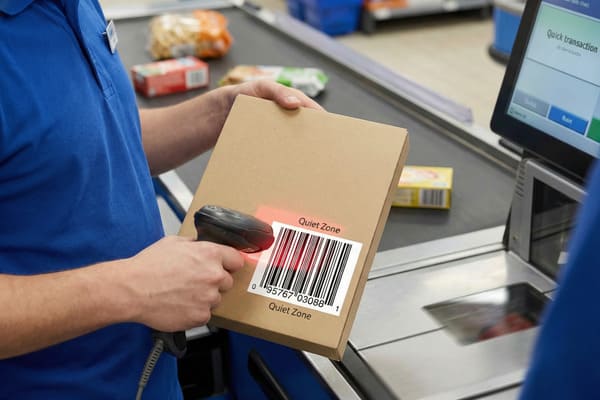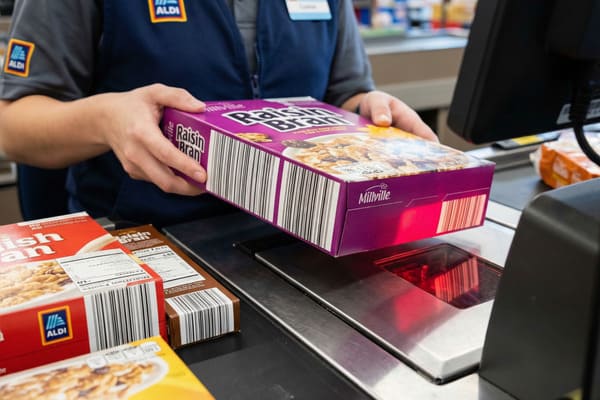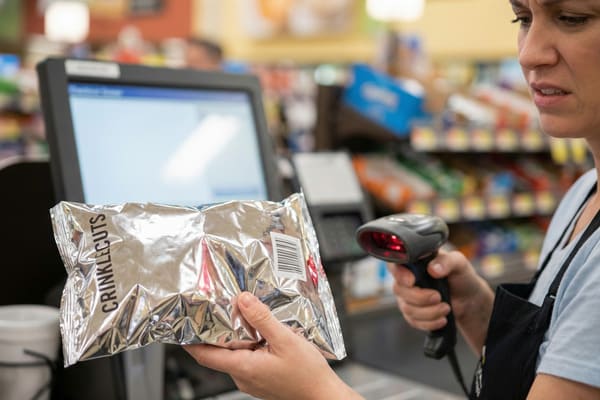Slow checkout lines are the silent killer of retail profitability. Whether you are a large corporate buyer or a franchise owner, watching customers get frustrated while a cashier struggles with a product is painful. The secret to speed often lies not in the cashier’s hands, but in the packaging design itself.
To get faster at scanning, retailers and brands must prioritize "Scan-Ready Packaging" design. This involves placing large, high-contrast barcodes on flat surfaces, utilizing multiple codes on a single package to reduce rotation time, and ensuring packaging materials do not reflect laser light, ensuring a seamless First Time Read Rate (FTRR).

When we look at the mechanics of retail, we realize that efficiency is a partnership between the human operator and the physical product. If the product fights the scanner, the line stops.
How to increase cashier Scan speed?
Many people assume increasing speed is just about training staff to move their hands faster, but that is only half the battle. The physical attributes of the product play a massive role.
Increasing cashier scan speed requires optimizing the "Quiet Zone" around barcodes and ensuring high print contrast signal (PCS). Brands should print barcodes on the smooth side of corrugated flutes to prevent distortion and place codes on the lower quadrants of heavy items to minimize lifting.

The Structural Anatomy of Scannable Packaging
To truly understand how to increase scanning speed, we have to look at the interaction between the laser scanner and the cardboard substrate. As a manufacturer, I often see designs where the barcode1 is treated as an afterthought, placed over a seam or a fold line. When a barcode sits on a fold, the vertical bars become distorted. A laser scanner reads the width of the bars and the spaces between them. If the cardboard is folded or crushed, those ratios change, and the scanner fails.
For heavy items, like the crossbows and hunting gear you deal with, the material choice is critical. We typically use specific flute types (like B-flute or E-flute) for packaging that needs high-quality printing. If you use a coarse A-flute and try to print a small barcode directly onto it, the "washboard effect" of the corrugation2 will cause the ink to settle unevenly. This creates jagged edges on the barcode bars. The scanner sees this as noise. Consequently, the cashier has to swipe the item three or four times, or worse, key in the numbers manually. This kills speed. Furthermore, the placement is vital for heavy items. If the barcode is on the bottom, the cashier has to flip a 15-pound box. We always recommend placing codes on the side panels for heavy goods to allow for "pass-through" scanning.
• Comparison of Packaging Factors Affecting Scan Speed
| Factor | Standard Packaging | Optimized High-Speed Packaging |
|---|---|---|
| Barcode Placement3 | Often on the bottom or near folds | Lower side panels, away from seams |
| Material Surface | Raw corrugated (high absorption) | Clay-coated newsback (CCNB) for sharp ink |
| Code Frequency | Single barcode per unit | Dual or Omni-placement (2+ sides) |
| Average Scan Time4 | 3.5 – 5.0 seconds | 0.5 – 1.5 seconds |
| Handling Requirement | Lift and rotate | Slide and scan |
I have set up my production lines to specifically address these print quality issues. We use advanced high-definition flexographic printing that ensures the edges of your barcodes are razor-sharp, even on sturdy corrugated materials. My team checks the print clarity on every batch because I know that if your product causes a delay at the register, the retailer might blame your brand. We solve this during the prototyping phase.
How to speed up the scanning process?
Speeding up the entire process involves looking at how the product sits on the counter or in the display before it even reaches the scanner.
Speeding up the scanning process is best achieved by utilizing Shelf-Ready Packaging (SRP) and PDQ displays that allow for easy product removal. Ensuring that the packaging structure remains rigid and does not deform under grip prevents barcode distortion, allowing the scanner to capture data instantly without manual entry.

Strategic Structural Integrity and Material Selection
The durability of the packaging directly correlates to the speed of the transaction. You mentioned that one of your pain points is display strength issues and poor material leading to collapses. This is a massive issue for scanning speed. Imagine a scenario where a customer picks up a heavy hunting accessory from a weak cardboard display. The package warps under the weight of the product because the supplier used recycled paper with short fibers instead of virgin kraft paper. When the box warps, the barcode sticker5 wrinkles.
When the barcode wrinkles, the scanner cannot read it. Now the cashier has to smooth out the box or type in the SKU. This friction accumulates. In my factory, we focus heavily on the "crush test6" ratings of our cardboard. For products sold in the US and Canada, specifically for heavy outdoor gear, we need materials that hold their shape from the warehouse to the checkout counter. We also look at the gloss level. Highly glossy laminates can reflect the scanner’s laser, causing a "no-read." We recommend matte or semi-gloss finishes for the area surrounding the barcode. It is a balance between making the packaging look premium for the customer and making it functional for the machine. If the packaging collapses or deforms, you lose that functionality.
• Material Impact on Scanning Efficiency
| Material Defect | Consequence at Checkout | Solution |
|---|---|---|
| Low Crush Strength7 | Box warps, crinkling the barcode | High-strength Kraft linerboard |
| High Gloss Laminate8 | Laser reflection (blind spots) | Spot UV or Matte finish zones |
| Soft Corrugation | Ink bleed (fuzzy barcodes) | High-quality coated top sheets |
| Weak Glue Joints | Flap covers barcode | Precision gluing automation |
I insist on using specific paper grades that balance strength and printability to avoid these collapses. When we create samples for you, we don’t just look at the aesthetics; my engineers simulate the handling process. We ensure that the area carrying the data is reinforced so that when a buyer grabs your crossbow kit, the box stays square, the code stays flat, and the scanning is instant.
How to make being a cashier go by faster?
Psychologically, a cashier’s shift feels shorter when they can get into a rhythm. Interruptions break this flow and make the day drag on.
To make the cashier experience go faster, brands should design ergonomic packaging that is easy to grip and manipulate. Consistent labeling locations and high-contrast visuals reduce the cognitive load on the cashier, allowing them to maintain a rhythmic ‘flow state’ without stopping to search for data.

Ergonomics and Cognitive Load in Retail Design
We often forget that cashiers are processing thousands of items a day. If your product requires them to stop, rotate the box three times, and squint to find a small code hidden under a flap, you are breaking their cognitive flow. This causes fatigue and frustration. From a design perspective, we call this "visual hierarchy9." The barcode should be easy to locate peripherally. It should not be hidden amidst busy artwork or similar-looking QR codes.
For heavy items like yours, handle placement is also part of scanning speed. If a box is difficult to grab, the cashier struggles to align it with the scanner window. Cardboard displays play a role here too. A well-designed Countertop Display (PDQ)10 presents the product upright and organized. If the display is messy or falling apart, the cashier has to organize the mess before they can scan. We design our displays to act as efficient dispensing systems. This means the product is always presented in the same orientation. When the orientation is predictable, the cashier builds muscle memory. They know exactly where to grab your product and where the scan point is, without even looking directly at it. This muscle memory is what makes the day go by faster.
• Friction Points vs. Design Solutions
| Friction Point | Impact on Cashier | Design Solution |
|---|---|---|
| Hidden Barcodes11 | Stops flow, causes frustration | Standardized "lower right" placement |
| Heavy/Awkward Grip | Physical fatigue, slow movement | Integrated die-cut handles |
| Visual Clutter12 | Cognitive delay searching for code | Clear "Quiet Zones" around data |
| Unstable Displays | Time wasted tidying up | Reinforced double-wall display structures |
I prioritize creating 3D renderings that allow us to visualize how the product sits on the shelf and how it will be handled. We can adjust the artwork files you send us to ensure that while the branding is bold, the functional elements like barcodes are placed in ergonomically superior positions. We handle these modifications for free until the design works perfectly for both the consumer and the cashier.
How do Aldi cashiers Scan so fast?
Aldi is famous for its lightning-fast checkout speeds. This is not accidental; it is a result of rigorous packaging engineering specifications.
Aldi cashiers scan so fast because their private label products feature "Extended Barcodes" that stretch across the entire length of the package, or multiple barcodes printed on several faces. This allows the product to be scanned from almost any angle without the cashier ever needing to rotate the item.

The Mechanics of Omni-Directional Scanning Design
Aldi has mastered "Silent Commerce13." They require their suppliers to print barcodes that are significantly larger than the industry standard. in many cases, the barcode runs the full length of a can or box. Alternatively, they use a multi-face approach where the barcode appears on 3 to 5 sides of the packaging. This creates a "scannable field14" rather than a single scannable point. No matter how the cashier grabs the item or slides it across the glass, the laser will hit a code.
For a brand owner like you, adopting this strategy—even partially—can be a game-changer. While you might not want giant barcodes ruining your artistic crossbow packaging, we can cleverly integrate codes on two opposing sides or use "truncation" to fit larger codes in smaller spaces without losing readability. In the cardboard display industry, we apply this by printing codes on the tear-away sections of shipping cartons (shippers) that turn into displays. This ensures that the retailer can scan the incoming stock quickly before setting it up. It is about removing the "search" phase of the scanning process entirely.
• Traditional vs. High-Speed (Aldi-Style) Packaging
| Feature | Traditional Packaging | Aldi-Style / High-Speed |
|---|---|---|
| Barcode Count | 1 per unit | 3 to 5 per unit |
| Barcode Size | Standard 100% UPC (1.5" x 1") | Extended or 200% magnification |
| Orientation | Fixed single direction | Horizontal and Vertical mix |
| Scan Success Rate15 | Approx 85% on first pass | 99% on first pass |
We have the printing technology to implement these multi-code layouts without compromising your brand image. My team can take your existing artwork and suggest strategic placements for secondary barcodes that are less obtrusive but equally functional. This ensures you meet the strict deadlines and high throughput requirements of major US retailers, keeping your product moving and your buyers happy.
Conclusion
Improving scanning speed is a technical challenge that is solved through superior packaging structure and print quality. By choosing the right materials and optimizing design, we ensure your products glide through the checkout, keeping retailers profitable and customers satisfied.
Understanding barcode placement can significantly enhance scanning efficiency and reduce checkout delays. ↩
Exploring the impact of corrugation on printing can help manufacturers choose the right materials for optimal barcode readability. ↩
Understanding optimal barcode placement can significantly enhance scan efficiency and reduce errors in logistics. ↩
Exploring methods to reduce average scan time can lead to improved operational efficiency and faster processing in supply chains. ↩
Exploring barcode technology will enhance your knowledge on maintaining efficient transactions and avoiding delays at checkout. ↩
Understanding crush tests can help you ensure your packaging is durable and effective, preventing costly scanning issues. ↩
Understanding the impact of Low Crush Strength can help improve packaging design and scanning efficiency. ↩
Exploring this link will reveal solutions to mitigate scanning issues caused by High Gloss Laminate. ↩
Understanding visual hierarchy can enhance product placement and improve cashier efficiency, making it a crucial aspect of retail design. ↩
Exploring the advantages of PDQ displays can help optimize product presentation and streamline the checkout process. ↩
Understanding the impact of hidden barcodes can help improve checkout processes and reduce frustration. ↩
Exploring the effects of visual clutter can lead to better design solutions that enhance customer experience. ↩
Explore this link to understand how Silent Commerce can revolutionize retail efficiency and customer experience. ↩
Learn about scannable fields to enhance your packaging strategy and improve checkout speed. ↩
Understanding the impact of Scan Success Rate can enhance operational efficiency and customer satisfaction in retail environments. ↩




